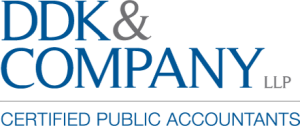
Planning for the future: 5 business succession options and their tax implications
When it’s time to consider your business’s future, succession planning can protect your legacy and successfully set up the next generation of leaders or owners. Whether you’re ready to retire, you wish to step back your involvement or you want a solid contingency plan should you unexpectedly be unable to run the business, exploring different succession strategies is key. Here are five options to consider, along with some of the tax implications.
1. Transfer directly to family with a sale or gifts
One of the most common approaches to succession is transferring ownership to a family member (or members). This can be done by gifting interests, selling interests or a combination. Parents often pass the business to children, but family succession plans can also involve siblings or other relatives.
Tax implications:
Gift tax considerations. You may trigger the federal gift tax if you gift the business (or part of it) to a family member or if you sell it to him or her for less than its fair market value. The annual gift tax exclusion (currently $19,000 per recipient) can help mitigate or avoid immediate gift tax in small, incremental transfers. Plus, every individual has a lifetime gift tax exemption. So depending on the value of the business and your use of the exemption, you might not owe gift taxes on the transfer. Keep in mind that when gifting partial interests in a closely held business, discounts for lack of marketability or control may be appropriate and help reduce gift taxes.
Estate planning. If the owner dies before transferring the business, there may be estate tax implications. Proper planning can help minimize estate tax liabilities through trusts or other estate planning tools.
Capital gains tax. If you sell the business to family members, you could owe capital gains tax. (See “5. Sell to an outside buyer” for more information.)
2. Transfer ownership through a trust
Suppose you want to keep long-term control of the business within your family. In that case, you might place ownership interests in a trust (such as a grantor-retained annuity trust or another specialized vehicle).
Tax implications:
Estate and gift tax mitigation. Properly structured trusts can help transfer assets to the next generation with minimized gift and estate tax exposure. Trust-based strategies can be particularly effective for business owners with significant assets.
Complex legal framework. Because trusts involve legal documents and strict rules, working with us and an attorney is crucial to ensure compliance and optimize tax benefits.
3. Engage in an employee buyout or management buyout
Another option is to sell to a group of key employees or current managers. This path often ensures business continuity because the new owners already understand the business and its culture.
Tax implications:
Financing arrangements. In many cases, employees or managers may not have the funds to buy the business outright. Often, the seller finances part of the transaction. While this can provide ongoing income for the departing owner, interest on installment payments has tax consequences for both parties.
Deferred payments. Spreading payments over time can soften your overall tax burden by distributing capital gains across multiple years, which might help you avoid being subject to top tax rates or the net investment income tax. But each payment received is still taxed.
4. Establish an Employee Stock Ownership Plan (ESOP)
An ESOP is a qualified retirement plan created primarily to own your company’s stock, and thus it allows employees to own shares in the business. It may be an appealing choice for owners interested in rewarding and retaining staff. However, administering an ESOP involves complex rules.
Tax implications:
Owner benefits. Selling to an ESOP can offer potential tax deferrals, especially if the company is structured as a C corporation and the transaction meets specific requirements.
Corporate deductions. Contributions to an ESOP are usually tax-deductible, which can reduce the company’s taxable income.
5. Sell to an outside buyer
Sometimes, the best fit is outside the family or current employees or management team. You might decide to sell to an external buyer — for example, a competitor or private equity group. If you can find the right buyer, you may even be able to sell the business at a premium.
If your business is structured as a corporation, you may sell the business’s assets or the stock. Sellers generally prefer stock (or ownership interest) sales because they minimize the tax bill from a sale.
Tax implications:
Capital gains tax. Business owners typically pay capital gains tax on the difference between their original investment in the business (their “basis”) and the sale price. The capital gains rate depends in part on how long you’ve held the business. Usually, if you’ve owned it for more than one year, you’re taxed at the applicable long-term capital gains rate.
Allocation of purchase price. If you sell the assets, you and the buyer must decide how to allocate the purchase price among assets (including equipment and intellectual property). This allocation affects tax liabilities for both parties.
We can help
Succession planning isn’t a one-size-fits-all process. Each option has unique benefits and pitfalls, especially regarding taxes. The best approach for you depends on factors including your retirement timeline, personal financial goals and family or employee involvement. Contact a DDK Tax Advisor to ensure you choose a path that preserves your financial well-being and protects the business. We can advise on tax implications and work with you and your attorney to structure the deal advantageously. After all, a clear succession plan can safeguard the company you worked hard to build.
